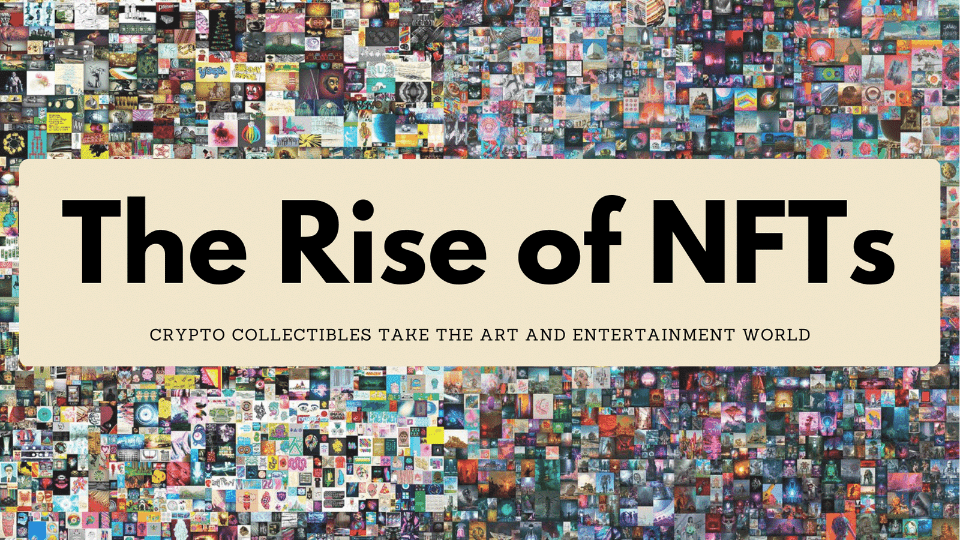
With the introduction of NFTs or Non-Fungible Tokens, the world of art and entertainment has been completely upended in recent years. Unique and one-of-a-kind digital goods, such as artwork, music, films, and more, can be sold by producers on the blockchain using these digital tokens. NFTs are designed to enable creators to commercialize their work in ways that weren’t previously conceivable while simultaneously enabling collectors to possess and trade one-of-a-kind digital objects. This article will examine the development of NFTs in more detail, how they have affected the art and entertainment sectors, and what the future may hold for these cutting-edge digital assets.
What Do NFTs Do?
Let’s start by explaining what NFTs are and how they operate. Blockchain technology is used by NFTs, a class of digital assets, to demonstrate ownership and authenticity. NFTs are unique and cannot be duplicated, in contrast to cryptocurrencies like Bitcoin or Ethereum which are fungible and may be swapped for other tokens of equivalent value. They are often made using smart contracts, which are self-executing contracts that automatically enforce the conditions of the contract, on the Ethereum blockchain.
An NFT’s worth is established by the market, where buyers and sellers set the price based on supply and demand for the item. Online marketplaces are typically where NFTs are sold, with some of the more well-known platforms being OpenSea, SuperRare, and Nifty Gateway. NFTs can be bought by buyers using bitcoin, and as the transaction is recorded on the blockchain, it is transparent and immutable.
The ability for creators to maintain ownership and control over their digital works even after they have been sold is one of the special features of NFTs. This means that, unlike traditional art sales, musicians and artists can continue to make money off of their work as it is sold again on the secondary market.
In the world of art, NFTs
One of the industries that have benefited the most from the development of NFTs is the arts. Due to the ease with which digital versions can be transmitted and copied, digital artists have long struggled to earn a living from their creations. But, NFTs give artists a way to market distinctive and one-of-a-kind works of digital art, some of which sell for millions of dollars at auction.
The sale of digital artist Beeple’s work “Everydays: The First 5000 Days” is one of the most well-known instances of NFTs in the art world. The NFT, the third most expensive piece by a living artist ever sold at auction, fetched the astounding price of $69 million at Christie’s auction house. The artwork is an original and one-of-a-kind creation since it is a composite of each image Beeple produced every day for 5,000 days.
Success with NFTs has been experienced by other digital artists as well; some have sold works for tens of thousands of dollars or more. NFTs give artists the opportunity to monetize their work without having to rely on conventional gatekeepers like galleries or auction houses, which is one of their advantages.
The Music Industry’s NFTs
NFTs have also gained popularity quickly in the music sector, where singers sell exclusive digital goods including unheard music, concert tickets, and merchandising. The selling of the most recent album by Kings of Leon as an NFT is one of the most well-known instances of NFTs in the music business. The band sold three different sorts of NFTs, each with differing levels of exclusivity and access, and the record came with exclusive artwork and other digital goodies.
With NFTs, other performers have also found success, with some offering fans special goods and experiences. For musicians, the advantages of NFTs include the potential to provide fans with one-of-a-kind and exclusive digital goods as well as a mechanism to monetize their work rather than through conventional revenue sources like streaming and live performances.
The Future of Entertainment with NFTs
NFTs’ ascent has not been without criticism, with some detractors contending that they fuel the already inflated art market and are a bubble just waiting to pop. Some have expressed worries about the environmental effects of NFTs because they can use a lot of energy to mine and validate blockchain transactions.
Notwithstanding these worries, NFTs appear to have a promising future. The market for NFTs is anticipated to expand even further as more artists and producers adopt the technology. NFTs may become more commonplace in the entertainment sector as video game publishers and movie companies use them to offer fans exclusive digital goods and experiences.
We might observe the emergence of fresh and creative application cases as NFTs gain popularity. NFTs could be used, for instance, to symbolize ownership of tangible things like real estate or classic cars. They might also serve as a symbol for intellectual property ownership, such as patents or trademarks.
Conclusion
One of the most fascinating trends in contemporary art and entertainment has been the emergence of NFTs. These digital tokens give producers a chance to monetize their work that wasn’t previously feasible by allowing them to sell distinctive and one-of-a-kind digital assets. NFTs have been quickly embraced by the art world, with digital artists selling works at auction for millions of dollars. NFTs have been successful in the music sector as well, with singers selling followers certain digital goods. Although there are worries about the effects on the environment and the possibility of a bubble, the future of NFTs appears promising. NFTs may see the emergence of new and creative use cases as more artists and makers adopt the technology, increasing their excitement and value.



